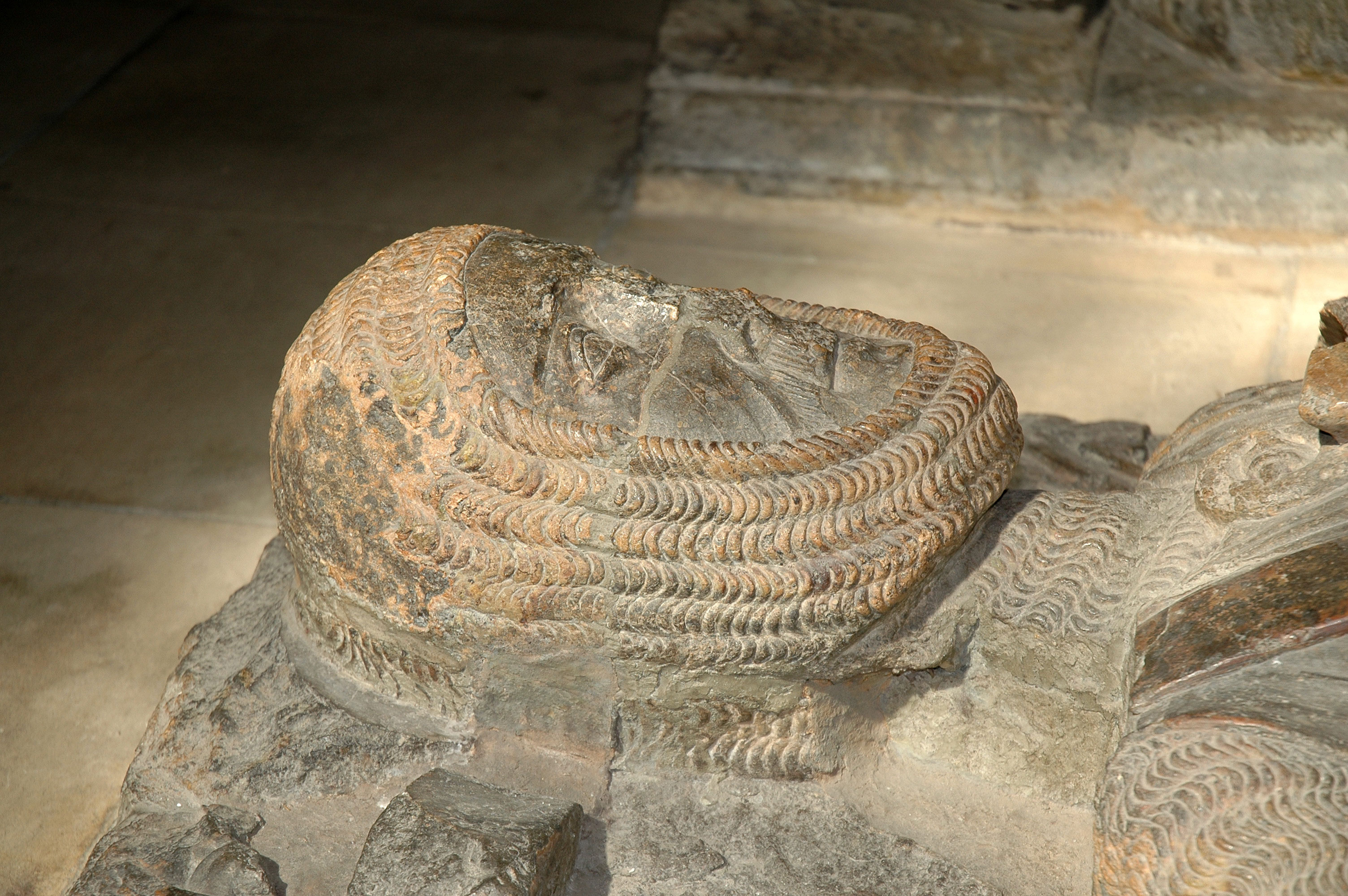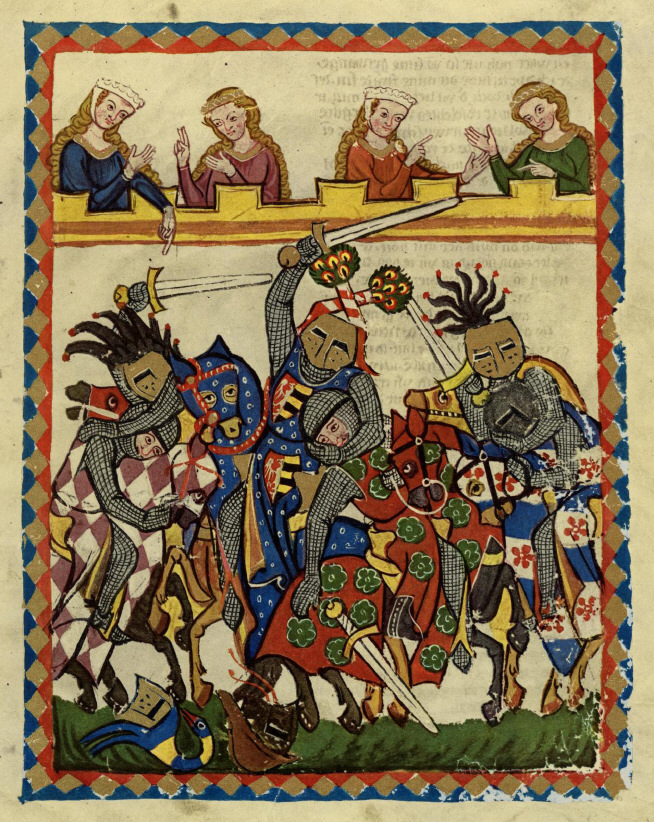Medieval England thought of it's people in 3 estates – those who fight (nobles), those who pray (churchmen) and those who work (peasants). This week in the history of England we look at the life of the nobility, through the life of William the Marshal.
35 12th century life – a knights tale rm
William the Marshal
William the Marshal started his career as penniless knight and ended it as one of the greatest magnates of England. This week we look at his career as a household knight, where he makes his fortune through the Tournament. If you wan to know more about William the Marshal, you could go to this website about his life.
Early Life
 We first see William lying in the sling of a catapult in front of his father's castle. with King Stephen threatening to turn him into jam unless John Marshal surrenders his castle. John refused, and Stephen was too nice to carry out the deed. We next see William in the mesnie, or household, of the Chamberlain of Normandy, William Tancarville, as a squire, where he stayed until asked to move on probably around the age of 20.
We first see William lying in the sling of a catapult in front of his father's castle. with King Stephen threatening to turn him into jam unless John Marshal surrenders his castle. John refused, and Stephen was too nice to carry out the deed. We next see William in the mesnie, or household, of the Chamberlain of Normandy, William Tancarville, as a squire, where he stayed until asked to move on probably around the age of 20.
William was a younger son; so he had to find a way to make his fortune. He didn't have 2 beans to rub together, but had no desire to hang around his brother's castle as a 'hearth brother' – useless and impotent. So he appealed to Patrick Earl of Salisbury, his uncle, and got a job in his household.
The big break
Patrick had to accompany Eleanor of Aquitaine to Poitou. They were ambushed by the Lusignan brothers, and it was William's courage and tenacity that gave Eleanor time to escape. Patrick was killed, and William captured. But Eleanor must have seen his heroism, and ransomed him, and gave him a job. Then, even better, she gave him a job in the household of Henry, the Young King, son of Henry IInd.
Henry the Young King
Although he was a rebellious pain in the royal backside, as were most of the Angevins, Henry had a glowing reputation at the time for his good looks and chivalry. He was a big fan of the Tournament, and William the Marshal became his closest friend and almost a team manager. The Tournament was the making of William Marshal. He reckoned to have captured over 500 knights, and toured all over France taking part. He even had a partnership with a Flemish mate, Roger de Gaugy who worked with him in tournaments, and the kitchen clerk, Wigain, who kept the score and sold off the proceeds. The tournament turned William into a poor household knight at the edge of things to the confidente of the heir to the throne and relatively comfortable financially.
The 12th Century Tournament
 This image comes from a 14th Century document, but it's still relevant since it shows the main event of the 12th Century tournament, the melee. 2 large groups of heavily mailed men charge at each other on horses and try to capture each other for the ransom. The audience cheers them on and picks it's favourites.
This image comes from a 14th Century document, but it's still relevant since it shows the main event of the 12th Century tournament, the melee. 2 large groups of heavily mailed men charge at each other on horses and try to capture each other for the ransom. The audience cheers them on and picks it's favourites.
The tournament would be thrown by a lord, who would set up a tournament village on the edge of a town. The lists would be created round the edge – where each combatant's squire would keep 3 extra lances. Hired mercenaries would protect a roped off safe area called the recet, where frightened or wounded knights could cower.
A bugle would sound, and both sides would charge at each other. This was the melee. The event could go on all day. Philip of Flanders was notorious for tipping up late and joining in when everyone else was tired, and sweep up loads of captures. William and Henry used a variation of the same trick – they would be there from the start, but would hold back from the shock of the first charge, and so keep themselves relatively fresh.
At this stage the Joust was a relatively small component of the tournament. It was allowed – often the start of the melee was delayed while the younger knights were allowed to joust with each other to win a bit of early glory, before the more experienced knights took them to the cleaners later on.
In the12th Century, the roots of the Tournament were still strongly based in the military training of young knights, and had not become a defining characteristic of a knight. Henry II banned the tournament on his English land. But by 14th Century they would become increasingly elaborate and closely linked to the ideals of the perfect knight.

This blog has been quintessential in my history revision and i thank you for this informative and interesting blog, its one of the best i have encountered.
Queen Eleanor is sick and very very sick. William Marshall is compelled by King Henry to don a friar’s disguise and deceive the dying queen into confessing her sins. Hilarity ensues.
https://www.youtube.com/watch?v=lGecygVBv54
I love this song despite how utterly historically inaccurate it is and I’m going to link it here because I think it showcases the memetic status enjoyed the Earl Marshall, deflowerer extraordinaire (considering Eleanor already had two children by Louis at the time). The words are not collected until (I think) Elizabethan time, but some believe the oral tradition to be much older. One theory suggests that the original infidelity rumour was attached not to Eleanor, but Margerite wife of the Young King. As these two minor historical characters faded into relative oblivion, the story (which is admittedly too good to waste) got attached to the much more memorable figure of Eleanor, who had through her power, personality and patronage of the arts acquired a towering presence in history and lore.
Other versions include the poisoning of Rosamund Clifford and all sorts of additional verses; quite a few people have recorded it, but I really like this one. More on Mainly Norfolk